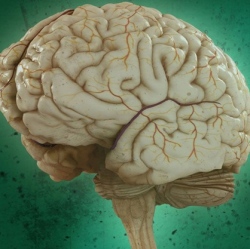
The consumer brain machine interface still doesn’t exist, but tech companies like Facebook are already thinking about how they can invest now to dominate the space. Elon Musk’s approach is without a doubt the most ambitious: develop an easily injectable neural electrode that can be both read and stimulate electrical activity in the brain.
One of the earliest, but still most exciting implications of being able to create activity in the brain is called tDCS, or transcranial direct current stimulation. It’s still in its infancy, but with medical-grade equipment, running currents over the brain could treat people with neurological diseases like Parkinson’s Disease. These medical uses are just “foothold” applications, though, meant to help Neuralink on its way to using tDCS to pump up the brain’s overall activity.
In other words, the goal is to make people smarter.
Dr. Roy Hamilton, a neuroscience researcher at the University of Pennsylvania and the author of a number of studies on transcranial direct-current stimulation and cognition, says it’s a promising tech, though not as magical an overall intelligence booster as Musk seems to hope.
“What we think is that by running current through the brain, we can incrementally nudge large numbers of brain cells into being slightly more likely to fire,” Hamilton tells Inverse. “If you multiply that by tens of millions of brain cells, over time the net effect is that you’ve [increased] the overall firing rate of neurons in the brain.”
The current from the tDCS device helps to electrically prime neurons and keep them closer to their firing state, thus making them easier and quicker to fire. There is real evidence that this could allow tDCS to enhance and/or restore memory recall, alertness, and creativity, and there are even questionably effective consumer products for sale to gamers and other enthusiast sub-cultures.
The trend has even extended to DIY brain stimulation, and while these low-cost rigs that work “non-invasively” (from outside the skull) are likely ineffective, it shows how much interest there is in mental augmentations.
Can tDCS Make Us Smarter?
Hamilton himself has conducted studies that have found significant effects on things like verbal fluency and word recall, and in general there’s a lot of excitement about the possibility that tDCS could enhance learning.
Yet many researchers still question whether the specific benefits seen in the studies above can translate into overall cognitive enhancement, especially in neurologically healthy people. One study even found a negative association between tDCS and IQ.
This makes basic sense; evolution could have reduced the resting resistance to firing to the level tDCS achieves while it’s applying a current, but instead evolution settled on the level of resistance we have now. In principle, that would be because there was some associated negative side effect to easier-firing neurons. It’s reasonable to assume that tDCS would replicate these downsides, whatever they may be.
“The devil is in the details,” Hamilton says. “It’s a misconception to think of cognition in a monolithic way, that it’s something that either gets boosted or depressed as a single entity. We’re talking about many processes, many of which are independent, and many of which interact. There’s always the possibility of cognitive trade-offs.”
In general, even if tDCS can help smart people get smarter, the magnitude of the effect will be negligible relative to the exponential increase in machine intelligence that Musk is worried about. It’s great to have a slight increase in the ability to form and recognize coherent phrases, for instance, but that’s not going to stave off technological unemployment, and certainly not a malevolent machine with a will to dominate mankind.
What we need, according to Musk himself, is a technology that could make out current brains seem as dumb as house cats, and we need it to arrive before revolutionary breakthroughs from A.I. researchers like those working for Musk himself.
Even with incredible future Musk-tech like neural lace in hand, tDCS will not be that technology. That’s alright though, because the whole point of neural lace is that it could provide a second, longer-term solution.
As Hamilton pointed out above, cognition arises from a collaboration of many different and interconnected thinking units, and Elon Musk wants to bring this perspective to the fore. Despite the company’s many references to deep brain stimulation, Neuralink’s ultimate idea of how neural lace could stop the brain from being eclipsed by A.I. is actually to “merge” the brain with that A.I. With a sufficiently fast and naturally controlled brain-machine interface, it could become possible to add to the regular collection of interacting brain regions with extra, digital cortices.
This is a means of not making brains smarter, but making people smarter in a more abstract sense. While tDCS could give people a bit of extra verbal fluency, the merging of human and machine intelligence is where the real potential for mind-expansion lies.
Hamilton says that there are “always issues with, sort of, ‘upgrading’ people,” whether it’s the idea of needing a brain implant to stay competitive, or just a further expansion of social inequality. “Who gets to have a brain implant?” he asked. “Who gets to be the haves and the have-nots of enhanced intellect?”
In the short term, as it relates to tDCS, the answer likely doesn’t matter all that much. But in the long term, if Musk can actually realize his cybernetic future, the haves could end up being exponentially more dominant than ever before.
